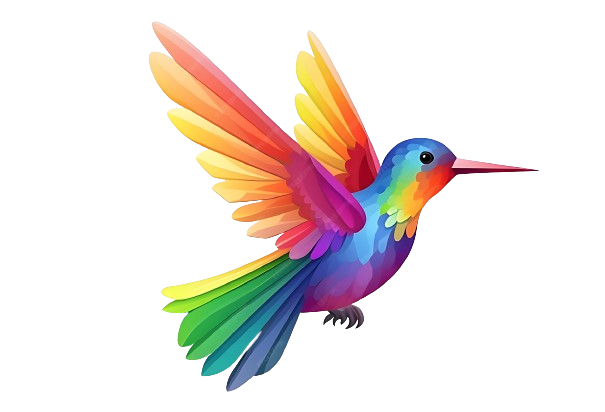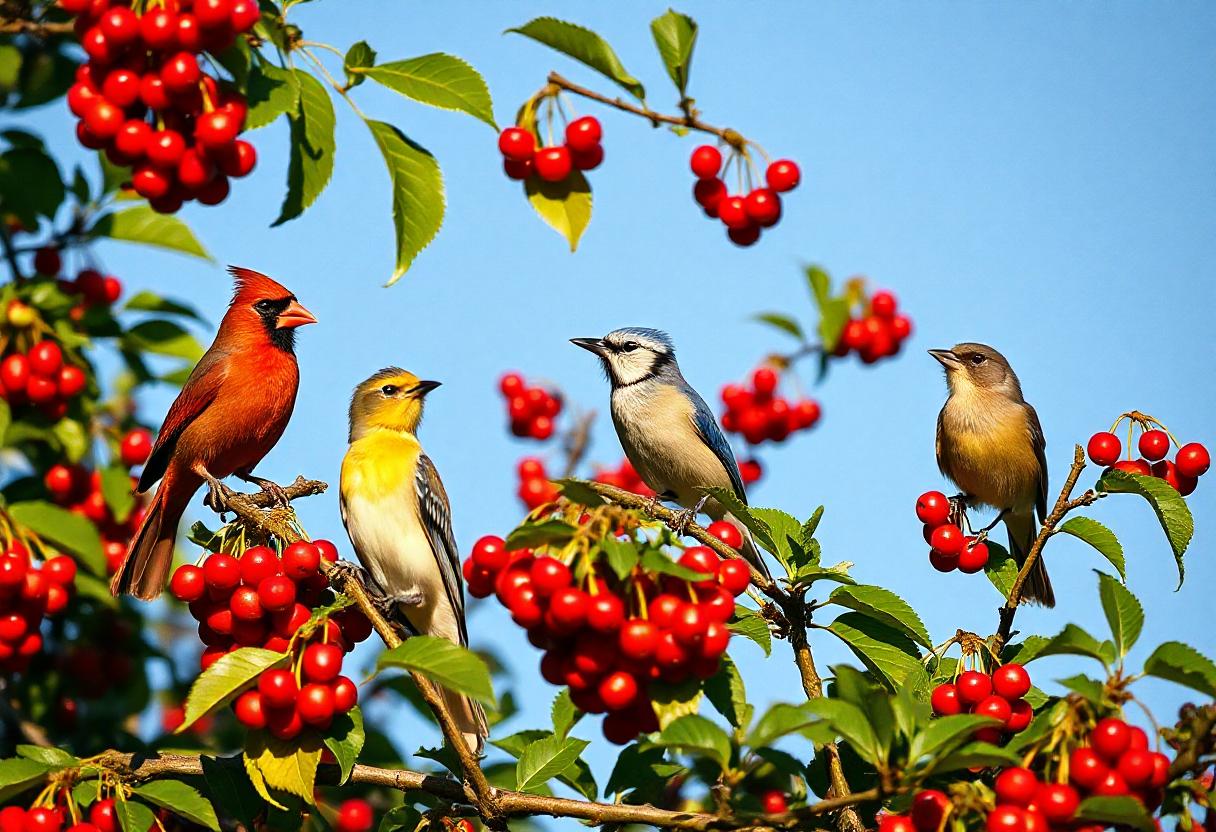Why Do Birds Not Eat Yanking Cherries? Birds generally avoid eating yanking cherries because these fruits contain compounds that can be harmful to them. Unlike other fruits that attract birds with their sweetness and nutrients, yanking cherries have a bitter taste and a high level of cyanogenic compounds. This makes them less appealing and potentially dangerous for many bird species.
While some birds may occasionally sample yanking cherries out of curiosity, most instinctively recognize the risks. Understanding why birds don’t eat yanking cherries sheds light on their natural instincts and dietary preferences.
This knowledge can help bird watchers and nature enthusiasts appreciate the delicate balance in the ecosystem.
Key Takeaways
- Birds generally avoid yanking cherries due to their bitter taste and the presence of cyanogenic compounds, which can be harmful if consumed in large amounts.
- Nanking cherries, often confused with yanking cherries, are actually a separate species that produce sweet fruit but still may not attract many birds due to their flavor profile.
- Bird dietary preferences are influenced by food availability, seasonal changes, and habitat, leading them to prefer sweeter, more nutritious options over yanking cherries.
- Chemical components, like sucrose and methyl anthranilate, make yanking cherries unappealing to specific bird species that lack the enzymes to digest these compounds.
- Environmental factors, such as visual and audio deterrents, also play a role in discouraging birds from approaching yanking cherries.
Overview of Yanking Cherries
Nanking cherries, not yanking cherries, are a notable variety of cherry that produce an abundant amount of fruit. These small fruits often weigh around 2 to 4 grams each.
They can cover branches, making them visually appealing. The fruiting behavior of Nanking cherries typically begins in early summer, providing food for various wildlife.
Nanking cherries attract several animals due to their size and easy access. Birds, squirrels, and other creatures often feed on them.
The branches may be loaded with fruit, allowing birds to feed without significantly reducing the number available. This abundance aids in sustaining the local ecosystem.
Most birds prefer to avoid Nanking cherries due to their bitter taste and the presence of cyanogenic compounds. These compounds, albeit low in concentration, make the fruit potentially hazardous.
Birds instinctively recognize these risks, leading them to seek more nutritious and less harmful options.
Despite the potential dangers, some birds may show curiosity toward Nanking cherries. This behavior can occur when other food sources become scarce.
However, the preference for safer, sweeter fruits typically dominates their choices. Understanding these feeding habits provides insight into bird behavior and the dynamics of their diets.
Characteristics of Yanking Cherries
Yanking cherries, a type of cherry, exhibit specific traits that affect whether birds consume them. Their flavor and toxicity profiles influence bird behavior and preferences when foraging for food.
Flavor Profile
Yanking cherries typically have a bitter taste. This bitterness results from the presence of carotenoids and anthocyanins, which are responsible for their color and certain health benefits. The sweetness found in other cherry varieties is often absent in yanking cherries, making them less appealing to birds.
Toxicity Concerns
Yanking cherries contain cyanogenic glycosides. These compounds can convert to hydrocyanic acid when consumed, especially if eaten in large amounts.
Birds may instinctively avoid these cherries due to the bitter flavor and the potential for toxicity. This learned behavior helps them manage their risk of harmful effects while optimizing their diet.
Bird Diet Preferences
Birds show preferences in their diets based on food availability and nutritional value. Different birds exhibit unique feeding habits, often influenced by their environment and the type of food sources accessible.
Common Food Sources
Many bird species enjoy consuming fruits, seeds, insects, and nectar. Cherries, particularly sweet varieties, attract birds like the Northern Mockingbird, American Robin, and Cedar Waxwing.
Birds often use these fruits to feed their young, highlighting the nutritional importance of cherries.
In contrast, broader access to food means that yanking cherries, with their bitter taste and cyanogenic compounds, do not appeal to many birds.
Factors Influencing Bird Feeding Habits
Several elements shape bird feeding behavior:
- Food Availability: Birds are more likely to eat certain foods when other options are scarce. If cherries are among the few fruits available, some birds might try them despite not typically choosing them.
- Season: Seasonal changes impact food sources. During harvest season, when fruits are plentiful, birds may prefer sweeter, more nutritious options.
- Habitat: Urban environments often alter feeding habits. Birds can adapt to find food in cities, leading to a greater chance of them trying out different foods, even yanking cherries, depending on availability.
Understanding these preferences provides insights into bird feeding behavior and the dynamics of their diets within various environments.
Reasons Birds Avoid Yanking Cherries
Birds often steer clear of yanking cherries due to specific factors related to their chemical makeup and environmental elements.
These aspects contribute to the overall unappealing nature of yanking cherries for various bird species.
Chemical Composition
Yanking cherries contain sucrose, a type of sugar that is hard for some bird families, such as starlings and robins, to digest. These birds lack the enzymes necessary to break down sucrose.
Additionally, certain cherry varieties produce methyl anthranilate, a natural compound that acts as a bird’s repellent. This chemical contributes to the cherries’ unappealing taste for many birds, making it less likely they will choose to eat them.
Environmental Factors
Visual deterrents play a significant role in keeping birds away. Items like shiny Mylar balloons, reflective tape, and mirrors can be hung in trees to scare birds off.
Moreover, audio deterrents such as noisemakers made from glass or plastic bottles create sounds that frighten birds.
These environmental elements discourage birds from approaching yanking cherries, further reinforcing the cherries’ avoidance.
Understanding these reasons sheds light on bird behavior and dietary choices about yanking cherries.
Conclusion
Birds’ aversion to yanking cherries reveals important insights into their feeding preferences and survival strategies. The presence of bitter compounds and natural repellents plays a significant role in their choices.
While some birds may experiment with Nanking cherries when food is scarce, the risks associated with yanking cherries generally outweigh any potential benefits.
This understanding not only highlights the complexities of bird diets but also emphasizes the intricate balance within ecosystems.
By recognizing these behaviors, one can appreciate the adaptability and resourcefulness of birds in their quest for nourishment.
Frequently Asked Questions
Why do birds avoid eating yanking cherries?
Birds tend to avoid yanking cherries due to their bitter taste and high levels of cyanogenic compounds. These compounds can be harmful, making yanking cherries less appealing compared to sweeter, more nutritious fruits.
What are Nanking cherries?
Nanking cherries are a different variety that produces abundant fruit, attracting various wildlife, including birds and squirrels. Unlike yanking cherries, Nanking cherries may entice birds due to their availability, even though they can be bitter and contain cyanogenic compounds.
Can birds eat Nanking cherries?
Yes, some birds may eat Nanking cherries, especially when other food sources are scarce. Despite their bitterness and the presence of cyanogenic compounds, curiosity can lead birds to try these cherries.
What chemical components make yanking cherries unappealing to birds?
Yanking cherries contain sucrose, which is hard for some bird families to digest, and methyl anthranilate, a natural repellent. These compounds contribute to their aversion among birds.
How do environmental factors influence bird feeding habits?
Environmental factors, such as visual and audio deterrents, also play a significant role in birds avoiding yanking cherries. These elements can create an unwelcoming feeding environment, further discouraging birds from approaching.
What can we learn from birds’ feeding habits on yanking and Nanking cherries?
Understanding these feeding habits helps us appreciate bird behavior and dietary dynamics. It highlights the delicate balance of ecosystems and provides insights into how animals adapt their feeding strategies based on food availability.
Also Read:

